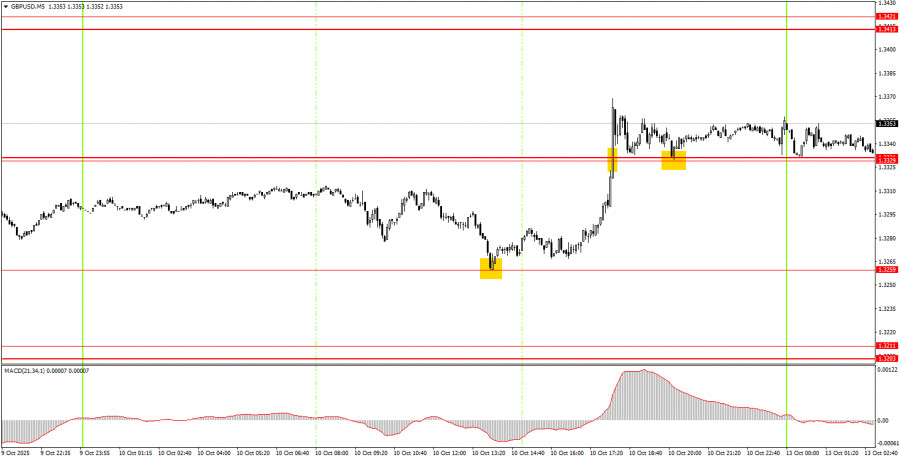

The GBP/USD pair also showed signs of recovery on Friday, although in the first half of the session, it once again attempted to resume its decline and failed to break through the descending trendline. Therefore, the downtrend remains in effect for now, even though it is entirely illogical.
The rise of the dollar should have come to an end a week ago. Even then, there were more than enough reasons for the U.S. currency to resume falling. Over the past week, those reasons have only multiplied, especially after Donald Trump initiated a new round of trade war escalation with China—a key reason for the dollar's collapse earlier this year.
Even central bank monetary policy had taken a back seat to geopolitical risks. Meanwhile, the U.S. is in the midst of a government shutdown, and the Federal Reserve is expected to continue cutting rates, unlike the European Central Bank or the Bank of England.
As such, there is currently no justification for expecting the dollar to strengthen further.

In the 5-minute time frame, a strong buy signal was formed during the European session on Friday. The price bounced with precision from the 1.3259 level and then gained 80–90 pips, consolidating above the 1.3329–1.3331 zone.
By Friday evening, novice traders had the opportunity to close their trades with a solid profit. Today, a bounce from the 1.3329–1.3331 zone is another reason to look for long entries.
On the hourly timeframe, GBP/USD continues to form a downward trend. As mentioned previously, there are no strong reasons to expect prolonged dollar strength. In the medium term, we continue to expect an upward movement. That said, the market is currently in a very strange state. The pound is falling, but without any clear justification. While technical strategies on lower timeframes remain applicable, current price behavior appears illogical across all timeframes.
On Monday, the GBP/USD pair may continue its upward movement, as the 1.3329–1.3331 zone was breached on Friday. A bounce from this area opens the door for long positions with a target at 1.3413–1.3421. Failure to hold above this zone would make short positions relevant, with a target at 1.3259.
On the 5-minute timeframe, the following levels can be used for trading: 1.3102–1.3107, 1.3203–1.3211, 1.3259, 1.3329–1.3331, 1.3413–1.3421, 1.3466–1.3475, 1.3529–1.3543, 1.3574–1.3590, 1.3643–1.3652, 1.3682, 1.3763. No critical or noteworthy events/reports are scheduled in the U.K. or U.S. on Monday, so today's volatility may remain low.
Important speeches and economic releases (always listed in the news calendar) can significantly impact currency movement. Traders should be especially cautious or exit positions before such events to avoid sudden price reversals.
Beginner traders in the forex market must remember: not every trade will be profitable. Developing a clear strategy and applying sound money management principles are keys to long-term success in trading.

QUICK LINKS